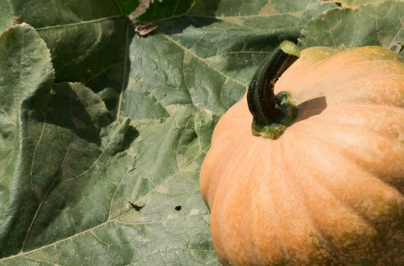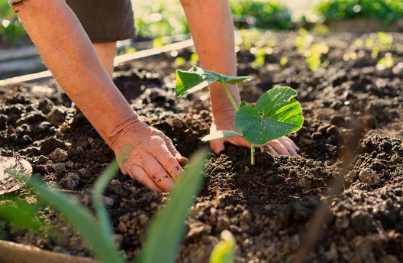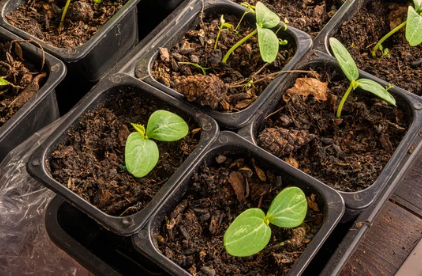In the vast realm of agriculture, one area that continues to captivate researchers, breeders, and gardeners alike is the development of hybrid seeds.
These remarkable creations bring together the best of different varieties, resulting in plants that possess desirable traits and characteristics.
In the case of pumpkins, hybrid seeds have opened up new possibilities for growers, offering improved disease resistance, uniformity, and enhanced traits.
In this blog post, we will dive deep into the intricacies of pumpkin hybrid seeds, exploring their development, benefits, popular varieties, cultivation techniques, and the future of this fascinating field.
What are Pumpkin Hybrid Seeds?

To comprehend the significance of pumpkin hybrid seeds, it’s essential to grasp the concept of hybridization. Hybrid seeds are the result of carefully orchestrated cross-pollination between two different parent plants, aiming to combine their favorable traits.
Skilled breeders play a pivotal role in this process, meticulously selecting parent plants with desired characteristics and skillfully manipulating pollination to achieve the desired outcomes.
Benefits of Pumpkin Hybrid Seeds

The utilization of hybrid seeds in pumpkin cultivation offers a range of advantages for growers. These benefits include:
Higher Yield:
Hybridization often leads to increased crop productivity. The carefully selected parent plants contribute their best genetic attributes, resulting in pumpkins that exhibit robust growth and produce larger yields.
Disease Resistance:
Hybrid pumpkin plants are engineered to possess enhanced disease resistance. This means they are better equipped to withstand common pumpkin diseases and pests, resulting in healthier and more successful harvests.
Uniformity:
One of the key benefits of growing pumpkins from hybrid seeds is the consistent and uniform quality of the resulting produce. Hybridization helps eliminate genetic variations, ensuring pumpkins of similar size, shape, and color. This uniformity is highly desirable for both commercial growers and home gardeners seeking aesthetically pleasing displays or consistent cooking ingredients.
Improved Traits:
Through the process of hybridization, breeders can select and combine desirable traits from different pumpkin varieties. These traits may include superior flavor, texture, storage ability, or even specific attributes for carving purposes. Hybrid seeds offer the potential to cultivate pumpkins that meet specific preferences and requirements.
Popular Pumpkin Hybrid Varieties

The world of pumpkin hybrids boasts an array of popular varieties, each with its distinct characteristics and uses. Some notable examples include:
“Autumn Blaze”:
This hybrid variety is prized for its vibrant orange color, exceptional disease resistance, and uniform size. It is a versatile pumpkin suitable for carving, cooking, and decorative purposes.
“Cinderella”:
Known for its unique flattened shape and deep orange hue, the “Cinderella” hybrid is sought after for its rich flavor and smooth texture. It is highly regarded for baking and culinary uses.
“Baby Boo”:
This miniature hybrid pumpkin is adored for its small size, pure white color, and adorable appearance. Baby Boo” is popular for decorative purposes, making charming additions to fall displays and centerpieces.
Cultivating Pumpkin Hybrid Seeds:

pumpkin hybrid seeds
Growing pumpkin hybrids requires careful attention to detail and proper cultivation practices. Here are some key steps to consider:
Site Preparation:
Choose a well-drained location with ample sunlight for optimal pumpkin growth. Prepare the soil by removing weeds and incorporating organic matter to improve its fertility.
Sowing:
Follow the recommended sowing guidelines provided by the seed supplier. Sow the hybrid seeds at the appropriate depth and spacing, ensuring they receive adequate moisture and warmth to germinate.
Pollination Techniques:
To maintain the purity of hybrid seeds, it is crucial to prevent unwanted cross-pollination. Consider using isolation techniques or hand-pollination to control the pollination process and maintain the integrity of the hybrid variety.
Watering, Fertilizing, and Pest Control:
Regular watering, appropriate fertilization, and diligent pest control are essential for healthy pumpkin growth. Monitor soil moisture levels, apply balanced fertilizers, and employ organic pest control methods to safeguard the plants.
Harvesting and Saving Pumpkin Hybrid Seeds:
To ensure the continuity of pumpkin hybrids, proper seed saving techniques are vital. Follow these steps to harvest and save hybrid pumpkin seeds:
Harvesting:
Wait until the pumpkins reach maturity. Look for signs such as a deep color, hard rinds, and dry stems. Harvest the pumpkins carefully, cutting them from the vine rather than pulling, to avoid damaging the seeds.
Seed Extraction and Cleaning:
Cut open the pumpkins and remove the seeds. Separate the seeds from the flesh and pulp. Rinse them thoroughly in water to remove any remaining debris.
Drying and Storage:
Spread the cleaned seeds on a flat surface in a well-ventilated area to dry. Ensure they are fully dry before storing them in airtight containers or envelopes. Place the containers in a cool, dry, and dark location to preserve their viability for future planting seasons.
The Future of Pumpkin Hybrid Seeds:
The field of pumpkin hybridization continues to evolve with ongoing research and innovation. Scientists and breeders are exploring new avenues to develop hybrids with increased drought tolerance, heat resistance, and extended shelf life.
Also, preserving genetic diversity through seed saving practices and responsible breeding techniques remains crucial for ensuring the resilience and sustainability of pumpkin varieties.
Conclusion
Pumpkin hybrid seeds have revolutionized the way we cultivate and enjoy these delightful autumn treasures.
With their higher yield potential, disease resistance, uniformity, and improved traits, hybrid pumpkins have become a favorite choice for farmers and gardeners.
As we look to the future, the continued exploration and development of pumpkin hybrids hold promising possibilities for meeting the world’s growing food demands while adapting to environmental challenges.
Embrace the fascinating world of pumpkin hybrids and unlock a realm of variety and innovation in your gardening or farming endeavors.
References:
- Purdue University – Hybrid Plants and Seeds
- University of Illinois Extension – Hybrid Plants and Seeds




